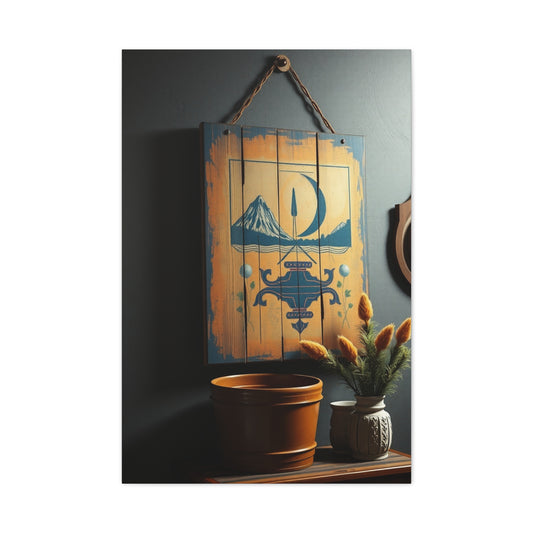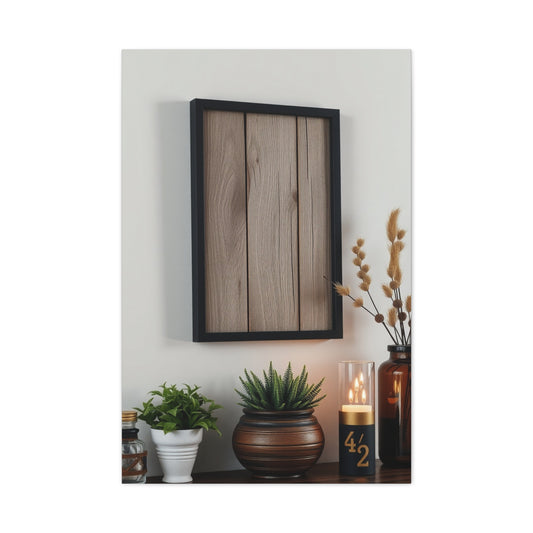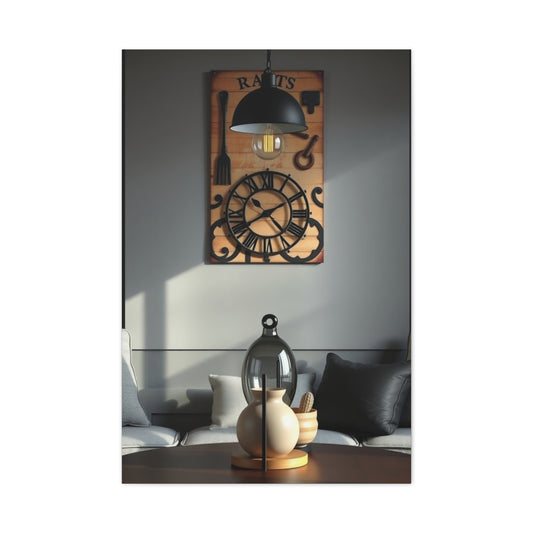The living room stands as the quintessential heart of every home, serving as the primary sanctuary where families convene for meaningful conversations, entertaining guests becomes an art form, and countless memories are woven into the fabric of daily life. This central gathering space demands meticulous attention to design principles that harmoniously blend functionality with aesthetic appeal, creating an environment that reflects the inhabitants' personalities while accommodating diverse activities and social interactions.
Contemporary interior design has evolved beyond mere furniture arrangement to encompass sophisticated concepts that consider spatial dynamics, color psychology, lighting strategies, and material textures. The modern approach to living room design emphasizes creating versatile environments that seamlessly transition between intimate family moments and elaborate social gatherings, requiring careful consideration of layout optimization, traffic flow patterns, and multifunctional furniture solutions.
Understanding the profound impact of environmental psychology on human behavior within residential spaces has revolutionized how designers approach living room concepts. The strategic implementation of design elements can significantly influence mood, productivity, social interaction patterns, and overall well-being of the occupants. Professional interior designers recognize that successful living room designs must address both conscious preferences and subconscious responses to spatial configurations, color schemes, and material selections.
Eclectic Contemporary Design Approaches for Dynamic Living Spaces
The eclectic contemporary design philosophy embraces the beauty of intentional contrast and curated chaos, creating visually stimulating environments that challenge conventional design boundaries while maintaining functional coherence. This approach celebrates the marriage of seemingly incompatible elements, transforming potential design conflicts into harmonious statements that reflect sophisticated aesthetic sensibilities and confident personal expression.
The Art of Contrast and Harmony
At the heart of eclectic contemporary design lies the art of blending contrasting elements in a way that feels intentional rather than chaotic. Unlike traditional design approaches that adhere to a specific set of rules, eclectic design encourages the unexpected and the unorthodox. The key is finding balance. Incorporating various styles, such as modern and vintage, industrial and bohemian, into a single space can create visual interest without overwhelming the viewer. This dynamic interplay of opposing elements, when executed thoughtfully, creates a space that feels vibrant, alive, and full of personality. Whether it's contrasting color palettes, mixed patterns, or mismatched furniture, the design should make a statement while remaining cohesive.
The Role of Color in Eclectic Design
One of the most exciting aspects of eclectic contemporary living rooms is the freedom to experiment with color. Eclectic design is not about following a strict color scheme but instead allowing the colors to complement and balance one another. This often involves mixing bold, saturated hues with muted tones, or pairing contrasting colors that, on paper, might seem incompatible. For instance, pairing a rich, deep navy blue with a bright yellow or combining pastel pink with mustard can create a striking contrast that feels sophisticated rather than jarring.
The key to managing these bold combinations lies in using neutral shades to ground the space, ensuring that the more vibrant tones don’t overpower the room. Neutral colors such as beige, grey, or soft whites serve as anchors, allowing the other hues to shine without creating visual chaos. Professional designers often rely on color theory to ensure that even the most unexpected combinations come together harmoniously. By employing a strategic balance of warm and cool tones, designers can make sure that each color choice enhances the others, creating a sense of unity despite their apparent contrast.
Texture Layering: Creating a Sensory Experience
Another cornerstone of eclectic contemporary design is texture layering. A successful eclectic room incorporates an exciting mix of textures that evoke tactile richness and sensory depth. The strategic combination of smooth and rough surfaces, matte and glossy finishes, soft and hard materials creates a multi-dimensional space that invites the senses to explore. A leather sofa paired with a fluffy wool throw or a sleek glass coffee table set against a rough, reclaimed wood wall offers a satisfying juxtaposition that elevates the entire room.
Textures also play an important role in adding warmth and comfort to the space. In eclectic design, soft textures like plush fabrics, velvet cushions, or woven rugs help to balance the cooler, more industrial elements like metal furniture or concrete floors. The contrast between these materials creates an environment that feels inviting yet visually stimulating. Moreover, incorporating diverse textures can enhance the auditory experience of the space as well, whether it's the sound of footsteps on a hardwood floor or the soft rustle of a silk curtain.
Furniture Selection: A Dialogue Between Eras
Furniture selection in eclectic living rooms requires thoughtful consideration of scale, proportion, and visual weight distribution. Mixing furniture styles from different periods and design movements creates a chronological dialogue within the space. Antique armchairs might sit next to a sleek, modern coffee table, or a mid-century modern lamp could rest on a contemporary minimalist desk. This cross-temporal dialogue tells stories about design evolution while keeping the space grounded in contemporary relevance.
The challenge lies in ensuring that individual pieces complement rather than compete with each other for attention. When mixing furniture styles, it's important to pay attention to the scale of the pieces. For instance, a large, vintage sofa may dominate a small space, whereas smaller, more streamlined furniture can allow other elements of the room to stand out. The visual weight of each piece should be balanced throughout the room, creating harmony while maintaining the dynamic tension that makes eclectic design so intriguing.
Artistic Expression and Personal Collections
Artistic elements and decorative accessories serve as the final layer in eclectic design schemes. These items provide opportunities to introduce personal collections, travel mementos, and statement pieces that reflect the occupants' interests and experiences. Whether it’s a vintage painting from a European market, a handmade sculpture, or a collection of pottery, these pieces tell a unique story and give the space a sense of personal identity.
When curating art and decor, it's important to strike a balance between individual expression and the overall design cohesion. The best eclectic rooms avoid randomness; each item should be thoughtfully selected and placed to contribute to the overall narrative of the space. For example, a modern art print might sit comfortably alongside a vintage wall mirror, creating a dynamic yet harmonious display. Similarly, decorative objects like antique vases, throw blankets, or books should be arranged in a way that feels intentional, adding to the richness of the space without feeling cluttered or out of place.
Cohesion Through Materiality
While eclectic design allows for the integration of many different styles and periods, it also requires some level of cohesion to prevent the space from feeling disjointed. One of the ways to establish this cohesion is through the careful selection of materials. Common materials such as wood, metal, glass, and fabric can be employed across different design elements to create subtle connections throughout the room. For example, a metal-framed mirror, metal light fixtures, and a metal coffee table can tie together disparate furniture pieces made from other materials, creating visual continuity.
Natural materials, such as stone, wood, and textiles, often serve as common threads that unite eclectic design elements. These materials not only add texture and warmth to the room but also create a sense of grounding that allows more unusual design choices to feel rooted and intentional. Wood elements, in particular, help to soften the overall look of the space, balancing out the more industrial or sleek elements like metal or glass.
Creating a Dynamic Yet Functional Living Room
The ultimate goal of eclectic contemporary design is to create a dynamic living room that is both visually stimulating and functional. A space that excites the senses, tells a personal story, and encourages interaction and comfort. Eclectic living rooms should invite guests to explore, offering a sense of discovery with every glance. The key to success lies in achieving balance—between boldness and subtlety, order and chaos, vintage and modern.
This dynamic approach to interior design allows for an environment that feels lived-in and full of character. Whether it’s the play of colors, textures, or the juxtaposition of old and new, each element within the room contributes to an overarching narrative that is as unique as the people who inhabit it. By embracing the beauty of contrast and celebrating individuality, eclectic contemporary design creates living spaces that are not only visually exciting but also profoundly personal and functional.
Modern Indian Design Aesthetics Blending Tradition with Contemporary Sensibilities
The fusion of traditional Indian design elements with contemporary aesthetics represents a sophisticated approach to creating culturally resonant living spaces that honor heritage while embracing modern lifestyle requirements. This design philosophy recognizes the importance of maintaining cultural identity within evolving residential patterns, creating environments that celebrate traditional craftsmanship while accommodating contemporary functionality needs.
Traditional Indian design elements encompass rich textile traditions, intricate woodworking techniques, metalwork artistry, and architectural details that have evolved over millennia. Incorporating these elements into modern living spaces requires understanding their cultural significance, historical context, and appropriate contemporary applications that respect their origins while ensuring practical functionality.
Furniture selection in modern Indian living rooms often features pieces that showcase traditional craftsmanship techniques such as carved wooden details, cane weaving, brass inlays, and hand-painted finishes. These pieces serve as focal points that anchor the room's cultural identity while being surrounded by more contemporary elements that ensure the space meets current lifestyle requirements.
Color palettes in modern Indian design draw inspiration from traditional sources such as spice markets, textile traditions, natural landscapes, and architectural heritage. Rich earth tones, jewel-like accent colors, and metallic highlights create sophisticated schemes that feel both timeless and contemporary. The strategic use of these colors can transform ordinary living spaces into environments that evoke the warmth and richness of Indian cultural traditions.
Textile integration plays a crucial role in achieving authentic modern Indian aesthetics. Traditional fabrics such as handwoven cotton, silk brocades, embroidered textiles, and block-printed materials introduce pattern, texture, and cultural authenticity to the living space. These textiles can be incorporated through upholstery, window treatments, decorative pillows, and artistic wall hangings.
Architectural elements such as carved wooden screens, traditional arches, decorative moldings, and geometric patterns can be incorporated into modern living rooms to create spatial definition while maintaining cultural authenticity. These elements serve both functional and aesthetic purposes, providing privacy, visual interest, and cultural connection within contemporary spatial frameworks.
Artistic accessories and decorative objects provide opportunities to showcase traditional craftsmanship and cultural artifacts within modern living spaces. Carefully curated collections of pottery, metalwork, sculptures, and textile art create meaningful displays that tell stories about cultural heritage while contributing to the overall aesthetic composition of the room.
Sophisticated French-Inspired Interior Design Concepts
French interior design represents the epitome of refined elegance, sophisticated color usage, and masterful attention to architectural details that create timeless living environments. This design approach emphasizes the importance of proportion, symmetry, and quality materials while maintaining an effortless elegance that appears both luxurious and comfortably livable.
The foundation of French design lies in understanding classical proportions and architectural principles that have guided French interior design for centuries. These principles emphasize the importance of balanced spatial relationships, harmonious color schemes, and the strategic use of decorative elements that enhance rather than overwhelm the architectural framework of the space.
Color psychology plays a crucial role in French interior design, with sophisticated neutral palettes serving as backdrops for carefully selected accent colors. The French approach to color emphasizes subtlety and refinement, using muted tones, soft contrasts, and elegant color combinations that create serene yet visually interesting environments. This approach recognizes that color can profoundly influence mood and perception while maintaining timeless appeal.
Furniture selection in French-inspired living rooms emphasizes quality construction, elegant proportions, and timeless design elements that transcend temporary fashion trends. Traditional French furniture pieces feature refined details, quality materials, and craftsmanship that improves with age. Contemporary interpretations maintain these quality standards while incorporating modern functionality requirements.
Fabric selection and textile usage represent crucial components of French design aesthetics. Luxurious materials such as silk, velvet, fine cotton, and high-quality wool create tactile richness while maintaining elegant sophistication. Pattern usage tends toward classic designs such as toile, damask, and subtle geometric patterns that add visual interest without overwhelming the overall composition.
Lighting design in French interiors emphasizes the creation of layered illumination schemes that provide both functional and ambient lighting while serving as decorative elements. Crystal chandeliers, elegant table lamps, and sophisticated sconces create warm, inviting atmospheres that enhance the overall aesthetic while providing practical illumination for various activities.
Architectural details such as crown molding, wainscoting, decorative panels, and elegant hardware contribute significantly to the overall French aesthetic. These details can be incorporated into contemporary spaces to create authentic French ambiance while maintaining modern functionality and lifestyle compatibility.
Contemporary Glamorous Design Approaches with Statement Elements
Contemporary glamorous design represents a sophisticated evolution of traditional luxury aesthetics, incorporating modern materials, innovative lighting solutions, and bold design statements that create visually striking yet functionally superior living environments. This approach emphasizes the dramatic impact of carefully selected statement pieces while maintaining overall design cohesion.
The foundation of contemporary glamorous design lies in understanding the psychological impact of luxury materials, sophisticated color schemes, and dramatic lighting effects. This approach recognizes that glamorous design should enhance rather than intimidate, creating environments that feel both impressive and welcoming to occupants and guests alike.
Statement lighting serves as a cornerstone of contemporary glamorous design, with innovative fixtures that function as sculptural elements while providing practical illumination. Modern lighting technology enables the creation of dramatic effects through LED systems, programmable controls, and artistic fixture designs that transform ordinary spaces into extraordinary environments.
Material selection in glamorous living rooms emphasizes the strategic use of reflective surfaces, rich textures, and luxurious finishes that create visual depth and tactile interest. Metals, glass, marble, and high-quality synthetic materials are combined to create sophisticated compositions that feel both contemporary and timelessly elegant.
Furniture selection focuses on pieces that combine comfort with visual impact, featuring clean lines, quality construction, and innovative materials. Contemporary glamorous furniture often incorporates unexpected elements such as acrylic details, metallic finishes, and sculptural forms that serve as functional art within the living space.
Color schemes in glamorous interiors typically feature sophisticated neutral bases enhanced by dramatic accent colors or metallic highlights. This approach creates versatile backdrops that can be easily updated through accessories while maintaining the underlying sophisticated aesthetic. The strategic use of contrast creates visual drama while ensuring long-term design satisfaction.
Decorative accessories and artistic elements provide opportunities to introduce personality and individual taste within glamorous design frameworks. Carefully curated collections, statement artworks, and luxurious textiles add layers of visual interest while maintaining the overall sophisticated aesthetic of the space.
Nostalgic Design Concepts Celebrating Regional Heritage
Nostalgic design approaches that celebrate regional heritage create emotionally resonant living spaces that honor local architectural traditions, cultural practices, and historical significance while adapting these elements for contemporary lifestyle requirements. This design philosophy recognizes the importance of place-based identity within increasingly globalized residential environments.
Understanding regional architectural heritage requires research into local building traditions, material usage patterns, decorative motifs, and spatial organization principles that have evolved within specific geographic and cultural contexts. This knowledge provides the foundation for creating authentic contemporary interpretations that respect historical precedents while meeting current functional needs.
Material selection in heritage-inspired living rooms emphasizes the use of traditional materials such as local woods, natural stones, regional textiles, and handcrafted elements that reflect local artisan traditions. These materials create authentic connections to place while providing opportunities to support local craftspeople and sustainable manufacturing practices.
Furniture selection often features pieces that reference traditional designs, construction techniques, and cultural practices associated with the region's heritage. Contemporary interpretations of traditional furniture forms maintain cultural authenticity while incorporating modern comfort standards and functionality requirements.
Color palettes draw inspiration from regional landscapes, architectural traditions, and cultural symbols that create meaningful connections to place and heritage. These color schemes often feature earth tones, natural pigments, and combinations that reflect the unique environmental characteristics of the specific region.
Architectural details such as traditional molding profiles, window treatments, ceiling treatments, and decorative elements can be incorporated into contemporary spaces to create authentic regional character. These details should be implemented thoughtfully to enhance rather than overwhelm the overall design composition.
Decorative elements and artistic accessories provide opportunities to showcase regional craftsmanship, cultural artifacts, and historical references that tell stories about local heritage and cultural traditions. These elements should be carefully curated to create meaningful displays rather than mere collections of regional objects.
Advanced Color Theory and Psychology in Living Room Design
Understanding the psychological impact of color within residential environments represents a crucial component of successful living room design, as color choices profoundly influence mood, energy levels, social interaction patterns, and overall spatial perception. Professional designers leverage advanced color theory principles to create environments that support desired behavioral outcomes while maintaining aesthetic appeal.
The science of color psychology recognizes that different colors trigger specific emotional and physiological responses that can significantly impact the quality of time spent within living spaces. Warm colors such as reds, oranges, and yellows tend to create energizing, social environments that encourage conversation and activity, while cool colors such as blues, greens, and purples promote relaxation, contemplation, and stress reduction.
Color temperature considerations extend beyond simple warm and cool classifications to encompass subtle variations that can dramatically impact spatial perception and occupant comfort. Understanding the relationship between natural light patterns, artificial lighting systems, and color appearance enables designers to create consistent color experiences throughout different times of day and seasonal variations.
Saturation and intensity levels represent equally important considerations in color selection, as highly saturated colors can create dramatic impact while potentially causing visual fatigue over extended periods. Balancing high-impact accent colors with more restrained background colors creates visually dynamic environments that remain comfortable for daily use.
Cultural associations with specific colors must be considered when designing for diverse populations or international clients. Colors that represent prosperity and happiness in one culture may have negative connotations in another, requiring sensitive navigation of cultural color symbolism while maintaining design integrity.
Practical considerations such as maintenance requirements, fade resistance, and compatibility with existing architectural elements influence color selection decisions. Understanding how different paint formulations, fabric dyes, and material finishes respond to light exposure, cleaning requirements, and normal wear patterns ensures long-term satisfaction with color choices.
Spatial Planning and Traffic Flow Optimization
Effective spatial planning forms the foundation of successful living room design, requiring careful analysis of how occupants move through and utilize the space during various activities and social configurations. Professional designers employ sophisticated planning principles that optimize traffic flow while ensuring functional efficiency and aesthetic coherence.
Traffic pattern analysis involves understanding primary circulation routes, secondary access paths, and activity zones that must be accommodated within the living room layout. This analysis considers both routine daily movements and special occasion requirements such as entertaining large groups or rearranging furniture for specific activities.
Furniture placement strategies must balance multiple competing priorities including conversation facilitation, traffic flow optimization, visual balance, and functional accessibility. Successful layouts create natural conversation groupings while maintaining clear pathways and ensuring that all seating positions provide comfortable viewing angles for entertainment systems and focal points.
Zoning concepts enable the creation of distinct functional areas within larger living spaces, allowing for simultaneous activities without interference. Effective zoning strategies use furniture placement, architectural elements, lighting systems, and material changes to define different areas while maintaining overall spatial coherence.
Scale and proportion considerations ensure that furniture selections are appropriately sized for the available space while maintaining comfortable circulation clearances. Understanding the relationship between furniture dimensions, room proportions, and human ergonomics prevents common layout mistakes that result in cramped or underutilized spaces.
Flexibility planning anticipates changing needs and usage patterns over time, incorporating modular furniture systems, moveable elements, and adaptable configurations that can accommodate evolving lifestyle requirements without requiring complete redesign.
Lighting Design Strategies for Enhanced Ambiance
Sophisticated lighting design represents one of the most powerful tools for creating mood, defining spaces, and enhancing the overall aesthetic quality of living room environments. Contemporary lighting approaches recognize the importance of layered illumination systems that provide functional task lighting, ambient mood lighting, and accent lighting for architectural and decorative features.
Natural light optimization involves understanding how daylight patterns change throughout the day and across seasons, then developing window treatment strategies that maximize beneficial natural illumination while controlling glare and heat gain. This approach considers the orientation of the space, surrounding architectural elements, and landscape features that influence natural light quality and quantity.
Artificial lighting systems must provide adequate illumination for various activities while creating pleasing ambient conditions that enhance rather than detract from the overall design aesthetic. Understanding the relationship between light output, color temperature, and spatial perception enables designers to create lighting schemes that support both functional and emotional needs.
Task lighting considerations ensure adequate illumination for specific activities such as reading, working, conversation, and entertainment while minimizing glare and visual discomfort. Strategic placement of table lamps, floor lamps, and directional fixtures provides focused lighting where needed without compromising overall ambient conditions.
Accent lighting systems highlight architectural features, artwork, and decorative elements while creating visual interest and spatial depth. These systems often employ specialized fixtures such as picture lights, wall washers, and decorative sconces that serve both functional and aesthetic purposes.
Control systems including dimmers, programmable switches, and smart home integration enable occupants to adjust lighting conditions according to specific activities, time of day, and personal preferences. These systems enhance both energy efficiency and user satisfaction while maintaining design aesthetic integrity.
Sustainable Design Practices and Environmental Considerations
Contemporary living room design increasingly emphasizes sustainable practices that minimize environmental impact while creating healthy, comfortable living environments. This approach considers the entire lifecycle of design decisions from material extraction and manufacturing through installation, use, and eventual disposal or recycling.
Material selection strategies prioritize renewable resources, recycled content, low-emission products, and locally sourced materials that reduce transportation impacts while supporting regional economies. Understanding the environmental implications of different material choices enables designers to make informed decisions that balance aesthetic requirements with environmental responsibility.
Indoor air quality considerations recognize the significant impact that furniture, finishes, and decorative materials can have on respiratory health and overall well-being. Selecting low-VOC paints, formaldehyde-free furniture, natural fiber textiles, and non-toxic cleaning products creates healthier living environments while maintaining design quality.
Energy efficiency strategies encompass lighting systems, heating and cooling considerations, and passive environmental control measures that reduce energy consumption while maintaining comfort levels. These strategies often involve window placement optimization, insulation improvements, and energy-efficient appliance selection.
Longevity planning emphasizes selecting quality materials and timeless design approaches that resist obsolescence and maintain functionality over extended periods. This approach reduces waste while providing better long-term value for occupants through reduced replacement and maintenance requirements.
Waste reduction strategies consider packaging, installation waste, and end-of-life disposal implications of design choices. Working with suppliers and contractors who prioritize waste reduction and recycling programs supports broader environmental objectives while maintaining project quality standards.
Technology Integration and Smart Home Considerations
Modern living room design must accommodate increasingly sophisticated technology systems that enhance entertainment, comfort, and convenience while maintaining aesthetic integrity. Successful technology integration requires careful planning that anticipates current and future technology requirements while preserving design flexibility.
Entertainment system integration involves planning for large-screen displays, sound systems, gaming equipment, and streaming devices that must be seamlessly incorporated into the overall design scheme. This planning includes cable management, equipment storage, ventilation requirements, and user interface accessibility.
Smart home system compatibility ensures that lighting controls, climate systems, security features, and entertainment equipment can be integrated into unified control systems that enhance user experience while maintaining individual system functionality. Understanding communication protocols and compatibility requirements prevents integration problems.
Furniture selection must accommodate technology requirements including charging stations, device storage, cable access, and ergonomic considerations for technology use. Contemporary furniture often incorporates built-in charging capabilities, hidden cable management, and adjustable features that support technology integration.
Infrastructure planning involves ensuring adequate electrical capacity, network connectivity, and ventilation systems that support current and anticipated technology requirements. This planning prevents costly retrofitting while ensuring reliable system performance.
Future-proofing strategies anticipate technology evolution and changing user requirements, incorporating flexible infrastructure and adaptable solutions that can accommodate emerging technologies without requiring major renovation projects.
Conclusion
The evolution of living room design continues to reflect changing lifestyles, technological advancement, and cultural shifts that influence how people utilize residential spaces. Understanding these trends enables designers and homeowners to create environments that remain relevant and functional over extended periods while expressing personal style and cultural identity.
Contemporary design trends emphasize flexibility, sustainability, technology integration, and cultural authenticity as primary considerations in creating successful living spaces. These trends reflect broader societal values including environmental responsibility, cultural diversity appreciation, and work-life balance optimization.
The future of living room design likely involves increased customization capabilities, advanced material technologies, and integrated smart systems that respond to occupant preferences and behaviors. These developments will enhance both comfort and efficiency while maintaining the fundamental goal of creating meaningful gathering spaces for families and communities.
Professional design services continue to evolve to address these changing requirements, offering specialized expertise in areas such as sustainable design, technology integration, cultural sensitivity, and accessibility considerations. Working with qualified professionals ensures that living room projects achieve optimal results that satisfy both immediate needs and long-term objectives.
Successful living room design ultimately depends on understanding the unique requirements, preferences, and lifestyle patterns of the occupants while applying professional design principles that create beautiful, functional, and meaningful living environments. This balance between personal expression and design expertise produces spaces that enhance daily life while reflecting individual identity and cultural values.




























